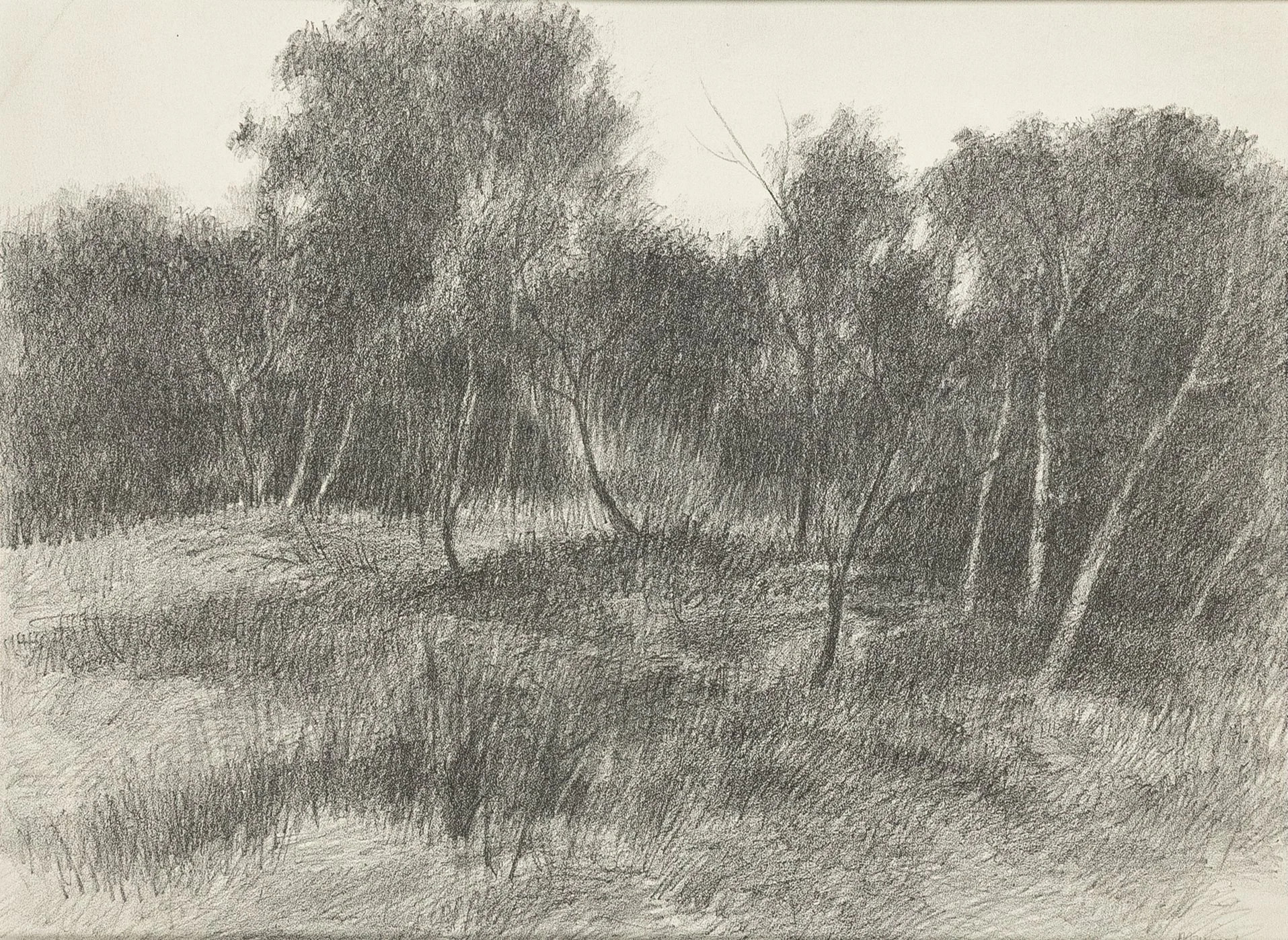
Richard
Mayhew
(1924-2024)
untitled
c. 1990
pencil drawing on paper
14 x 20 inches
signed
Known for his radiant, tonalist landscapes, Mayhew has built a career exploring color, light, and atmosphere as metaphors for spiritual and cultural experience. Born in Amityville, New York, in 1924 to African American and Native American (Shinnecock and Cherokee) parents, Mayhew has long described his heritage as essential to his artistic vision. The spiritual traditions of both lineages nourished his sense of nature as sacred and transformative.
After serving in the Marines in World War II, Mayhew returned to New York City, where he began formal art studies at Columbia University, the Brooklyn Museum School of Art, Pratt Institute, and the Art Students League. Reuben Tam (1916-1989) and Edwin Dickinson (1891–1978) were both teachers that had a profound effect on Mayhew’s art. Tam taught at the Brooklyn Museum School of Art and painted landscapes that often dissolved into near-abstraction, using light and color to capture the essence of place rather than its descriptive contours. Dickinson, at the Art Students League, was widely respected for his poetic, often dreamlike landscapes and figure paintings. He emphasized the “big look”, a way of seeing the whole before the parts, prioritizing atmosphere and tonal unity over detail. Mayhew’s own work blended both of these approaches and, through his lens, became a sacred reclamation of the land taken from his ancestors, both indigenous and those taken forcibly to this land.
I’m painting forty acres and a mule.
In 1955, Mayhew emerged into a NY art world in the throes of an Abstract-Expressionism dominated by male, white artists with his first solo show at the Brooklyn Museum of Art. He won a John Hay Whitney Fellowship in 1959, with which he traveled to Italy to study at the Accademia delle Belle Arti in Florence. Another grant from the Ford Foundation enabled him to remain in Europe, immersing himself in the work of the French Impressionists. When he returned to NYC, the Civil Rights Movement was at the forefront of the minds and hearts of the American people. He became a member of Spiral, alongside Romare Bearden, Norman Lewis, and Hale Woodruff. This group of artists, while diverse in style, was concerned with questions of identity, social responsibility, and artistic freedom. Mayhew’s presence expanded Spiral’s definition of what “Black art” could look like in the 1960s. In 1969, he was inducted into the National Academy of Design.
Mayhew has held posts at the Art Students League, Pennsylvania State University, and numerous other institutions, mentoring generations of artists who view him as a bridge between Black modernism and broader currents of American art. His works are housed in major museum collections, including the Metropolitan Museum of Art, the Whitney Museum of American Art, the Smithsonian American Art Museum, and the Studio Museum in Harlem.
Mayhew passed away in 2024 at the age of 100.
Selected Exhibitions
Richard Mayhew, Brooklyn Museum of Art, NY, 1955
Richard Mayhew: An American Abstractionist, Studio Museum in Harlem, NY, 1978
Richard Mayhew, Transcendence, ACA GALLERIES, New York, NY, 2020
RICHARD MAYHEW: REINVENTING LANDSCAPE, the Heckscher Museum of Art, Huntington, NY, 2022
Richard Mayhew: Inner Terrain, Santa Cruz Museum of Art & History, 2024
Richard Mayhew: Watercolor, Venus Over Manhattan, New York, NY, 2024-2025
Richard Mayhew, A Life in Art, ACA GALLERIES, New York, NY, 2025